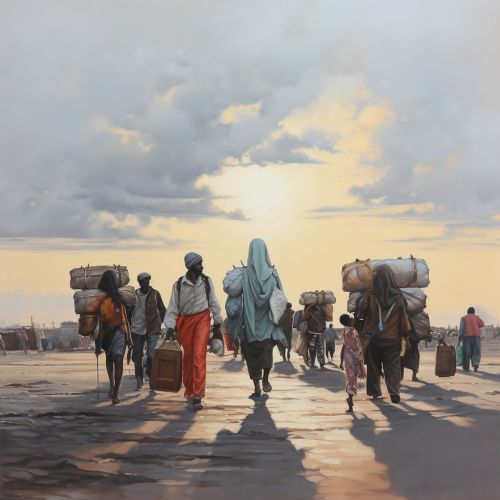Migration
Introduction
Migration is a global phenomenon that has been a part of human history since the beginning of our existence. It involves the movement of people from one geographical location to another, often crossing political boundaries and regions. Migration can be voluntary or involuntary, and can be influenced by a variety of factors including economic, social, political, or environmental conditions. The study of migration involves various disciplines such as sociology, geography, anthropology, political science, and economics.


Types of Migration
Migration can be classified into different types based on various factors. These include:
Internal and International Migration
Internal migration refers to the movement of people within a country, such as from rural areas to urban areas. International migration, on the other hand, involves the movement of people across national borders. The motivations and implications of these two types of migration can vary significantly.
Voluntary and Forced Migration
Voluntary migration occurs when individuals or groups choose to move for reasons such as economic opportunities, education, or lifestyle changes. Forced migration, however, involves individuals or groups who are compelled to move due to conflict, persecution, or natural disasters. This includes refugees, internally displaced persons, and asylum seekers.
Permanent and Temporary Migration
Permanent migration refers to individuals or groups who move with the intention of permanently settling in a new location. Temporary migration, also known as circular migration, involves individuals who move for a specific period, often for seasonal work or education, and then return to their home location.
Factors Influencing Migration
A variety of factors can influence the decision to migrate. These can be broadly classified into push and pull factors.
Push Factors
Push factors are conditions that drive individuals to leave their current location. These can include lack of economic opportunities, political instability, religious or ethnic persecution, and environmental disasters.
Pull Factors
Pull factors are conditions that attract individuals to a new location. These can include better economic opportunities, political stability, religious or ethnic tolerance, and environmental attractiveness.
Impacts of Migration
Migration can have significant impacts, both for the areas that migrants leave (source areas) and the areas to which they move (destination areas).
Impacts on Source Areas
The impacts on source areas can be both positive and negative. On the positive side, remittances from migrants can contribute to the local economy and alleviate poverty. On the negative side, the departure of young, working-age individuals can lead to a 'brain drain' and demographic imbalances.
Impacts on Destination Areas
Similarly, the impacts on destination areas can also be both positive and negative. On the positive side, migrants can contribute to economic growth and cultural diversity. On the negative side, large influxes of migrants can put pressure on local resources and services, and can sometimes lead to social tension and conflict.
Migration Policies
Countries around the world have developed a variety of policies to manage migration. These can range from open-door policies that encourage immigration, to restrictive policies that seek to limit it. Migration policies can significantly influence the experiences and outcomes of migrants, and can have wide-ranging impacts on both source and destination countries.
